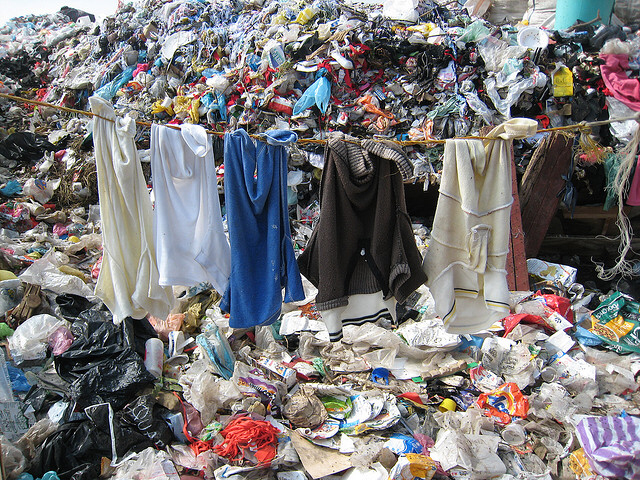Our Clothing Choices are Destroying the Planet
October 29, 2018
One look on Instagram and you’re sucked into the world of high street or fast fashion. Fast fashion, or the designs that move from the catwalk quickly to capture current fashion trends, has taken over the media. From Fashion Nova Kardashian copycats to Forever 21’s Instagram-ready new releases, we have all fallen into the trap of “trendy fashion for less”. These stores seem too good to be true, and I for one have experienced the downsides to fast fashion first-hand in terms of quality. But is quality really that the only problem with fast fashion? Do we really know what goes into the thousands of pieces of clothing at these stores?
The sad truth is, we don’t even see a fraction of what really goes on at say, the factories that produce mass amounts of tube tops or paper-bag pants. Or even the landfills that hold our old, unwanted clothes afterwards. “Globally, we’re producing over 100 billion new garments from new fibres every single year, and the planet cannot sustain that,” explains Lucy Seigle, a journalist that specializes in environmental issues. To put the impact of our clothing in perspective, it takes 1,800 gallons of water to produce the cotton needed for a pair of jeans and 400 gallons in order to produce the cotton in a plain tee shirt (Oldham County Water District). On top of the environmental impact of fast fashion, workers are not being paid a living wage (if they’re being paid at all) and are working in unsafe environments. Just 5 years ago, a building in Bangladesh that housed five garment factories collapsed and killed more than 1,100 people and injured thousands more, according to The Guardian.
Here are some simple ways to fight the negative impacts of fast fashion:
- Research and question your favorite fast fashion brands. Find out what the working conditions are for the people making your clothes.
- Consider how much/how often you will wear the pieces you want. Buy only what you know you will wear often or keep for a long time.
- Donate to donation centers (The Salvation Army, Goodwill, etc.) or to organizations that recycle unwanted clothing or shoes (GrowNYC, Soles4Souls, etc.).
- Shop from ethical clothing brands that are honest about where your clothes come from. Click here for an article that breaks down some of the best affordable, ethical, clothing brands.
- Shop from real-time and online thrift stores. Google “thrift stores near me” for thrift stores to go to or use sites like thredUP to shop online for used clothing.
Yes, it will take me and many others weeks, months, or years to convert to ethical clothing brands. But there are too many options to help lessen the impact of our clothing choices to continue to buy from fast fashion brands, wear them until the trend wears out, throw the items away, and repeat.
“Fashion can be a universal player in protecting the planet.” —Pharrell Williams (National Geographic 2014)


